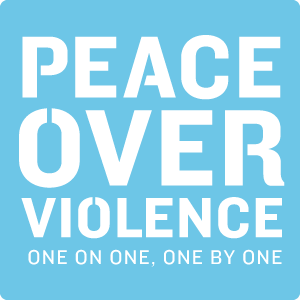Gun Violence is Pervasive
From 2001 through 2012, 6,410 women were murdered in the United States by an intimate partner using a gun - more than 600 each year. In California, there were 1,674 domestic violence fatalities during this same time period, averaging 167 per year. In 2021, the last year with data available, there were 82 domestic violence homicides in California. And while very concerning, these statistics are even believed to be underrepresented because domestic violence isn’t always documented.
Firearms Make Situations More Deadly
The presence of firearms in dangerous or abusive situations can increase the likelihood of severe injury or fatality. When laws requiring that firearms be turned in are implemented, we see a 16 percent reduction in domestic violence homicides, according to the American Journal of Epidemiology.
Solutions include common sense applications, which we have listed here, as well as legal remedies that are available, including Domestic Violence Restraining Orders (DVRO) and Gun Violence Restraining Orders (GVRO).
What is a Domestic Violence Restraining Order (DVRO)?
A DVRO is a petition that protects people and pets against abuse or violence from a family member or significant other. That might include a current or former spouse, intimate partner, or the other parent of a child.
What is a Gun Violence Restraining Order (GVRO)?
A GVRO is a petition that allows family members, household members, some employers, colleagues, teachers, and law enforcement to work with courts to temporarily remove guns and prevent the purchase of new guns by individuals who pose a significant risk of harm to themselves or others.
Why would I petition for a GVRO?
If someone you know is experiencing a crisis and is in danger of harming themselves or others, a GVRO may be an essential first step in preventing gun violence by removing guns, ammunition, and magazines from the restrained person’s possession.
What can a GVRO do?
If granted by a judge, a GVRO requires the restrained person to turn in any guns, ammunition and magazines either to the police or a licensed gun dealer. The person will also be prevented from purchasing guns, ammunition and magazines while the order is in place.
What can a GVRO NOT do?
A GVRO only prohibits ownership or purchase of firearms and ammunition. It does not order the restrained party from staying away from a location or person. A GVRO does not address abuse or harassment.
How do I obtain a GVRO or DVRO?
You can ask for a GVRO from law enforcement or file a request for a restraining order through your county court. DVROs must be filed through your county court. Forms are accessible for free through your local county court website. Many courts offer free assistance through Self-Help desks located inside the courthouse.
Once a request has been made, a judge will decide quickly whether to grant temporary protection.
A DVRO or GVRO should be served to the restrained person by law enforcement because of the high risk of danger when the restrained person has firearms. The local sheriff or marshall in each county is required to serve these orders for free, and other local law enforcement agencies are permitted to serve these orders as well.
How are Guns Confiscated After a GVRO or DVRO is Granted?
Law enforcement, when serving a DVRO or GVRO order, is required by law to ask the restrained person to turn over any firearms and ammunition they own or have in their possession or control, and are required to remove any firearms or ammunition in plain sight. The officer who takes the firearm(s) or ammunition is required to provide a receipt to the restrained party.
If law enforcement does not ask for firearms, or the restrained person does not provide them to law enforcement, the restrained person has 24 hours to sell or store their firearms and ammunition with a licensed firearms dealer or relinquish them to law enforcement. In either case, the restrained person should receive a receipt identifying the specific ammunition and firearms turned in. The restrained person must provide a copy of that receipt to law enforcement and the court within 48 hours after being served.
What if the restrained person violates the terms of the DVRO or GVRO?
Violations of either type of order are a criminal offense that can result in the restrained person being arrested and convicted criminally.
How Long Does the DVRO or GVRO Last?
An emergency GVRO is generally only valid for no more than 21 days. If granted, a full GVRO can be valid from one to 5 years, depending on the judge’s determination. Within three months of the expiration of the GVRO or DVRO, the petitioner may file a request to renew.
What if I’m uncomfortable with involving law enforcement?
There are many advocacy and community groups outside of law enforcement that can provide resources.
Interrupting Intimate Partner Violence: A Guide for Community Responses Without Police
justiceteams.org/intimate-partner-violence
Alliance for Boys and Men of Color
abmoc.org/healing-together/
Community-Led Responses to Domestic Violence
wscadv.org/resources/community-led-responses-to-domestic-violence/
What Other Resources Are Available?
We strongly encourage all survivors to work with a domestic violence prevention/survivor advocate, attorney, or legal services provider to ensure that a restraining order is part of a comprehensive safety plan and for support navigating the restraining order process.
To find a domestic violence service provider in your area, visit: nnedv.org/get-help/
In addition to addressing the firearms risks within safety planning, and available restraining orders, there are other legal remedies and protections to support survivors. These include remedies through the criminal system, civil lawsuits, job protection and rights to take time off of work, housing protections to keep survivors safely housed, ways to address coerced debts as the result of economic abuse, and much more.
Resources - The Family Violence Appellate Project - fvaplaw.org/legal-resource-library/
For More Info
Call Peace Over Violence at 213-955-9090
Call local law enforcement
For GVRO Info: EndingGV.org


